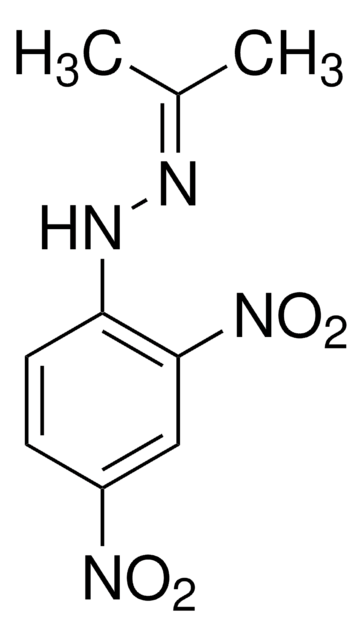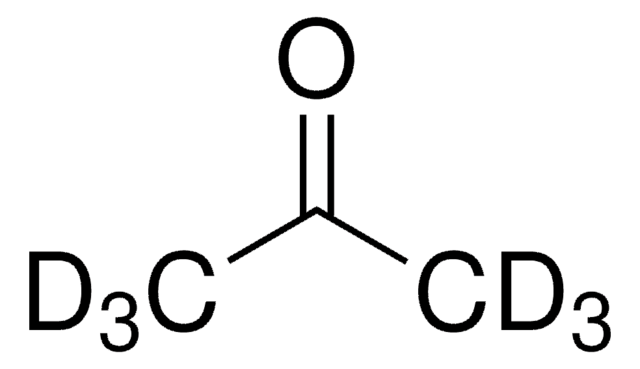1006801
USP
Acetone
United States Pharmacopeia (USP) Reference Standard
Sinonimo/i:
2-propanone
About This Item
Prodotti consigliati
Grado
pharmaceutical primary standard
Densità del vapore
2 (vs air)
Tensione di vapore
184 mmHg ( 20 °C)
Stato
liquid
Limite di esplosione
13.2 %
Produttore/marchio commerciale
USP
Disponibilità
not available in (Sales restrictions may apply)
Indice di rifrazione
n20/D 1.359 (lit.)
P. ebollizione
56 °C/760 mmHg (lit.)
Punto di fusione
−94 °C (lit.)
Densità
0.791 g/mL at 25 °C (lit.)
applicazioni
pharmaceutical (small molecule)
Formato
neat
Stringa SMILE
CC(C)=O
InChI
1S/C3H6O/c1-3(2)4/h1-2H3
CSCPPACGZOOCGX-UHFFFAOYSA-N
Cerchi prodotti simili? Visita Guida al confronto tra prodotti
Descrizione generale
Applicazioni
Also used to prepare standard and system suitability solutions for the assay, and impurity analysis according to the given below monographs of United States Pharmacopeia (USP):
- Acetone
- Methyl Alcohol
- Doxorubicin Hydrochloride
Risultati analitici
Altre note
Prodotti correlati
Avvertenze
Danger
Indicazioni di pericolo
Consigli di prudenza
Classi di pericolo
Eye Irrit. 2 - Flam. Liq. 2 - STOT SE 3
Organi bersaglio
Central nervous system
Rischi supp
Codice della classe di stoccaggio
3 - Flammable liquids
Classe di pericolosità dell'acqua (WGK)
WGK 1
Punto d’infiammabilità (°F)
1.4 °F - closed cup
Punto d’infiammabilità (°C)
-17.0 °C - closed cup
Scegli una delle versioni più recenti:
Certificati d'analisi (COA)
Ci dispiace, ma al momento non ci sono COA disponibili online per questo prodotto.
Se ti serve aiuto, non esitare a contattarci Servizio Clienti
Possiedi già questo prodotto?
I documenti relativi ai prodotti acquistati recentemente sono disponibili nell’Archivio dei documenti.
I clienti hanno visto anche
Il team dei nostri ricercatori vanta grande esperienza in tutte le aree della ricerca quali Life Science, scienza dei materiali, sintesi chimica, cromatografia, discipline analitiche, ecc..
Contatta l'Assistenza Tecnica.









